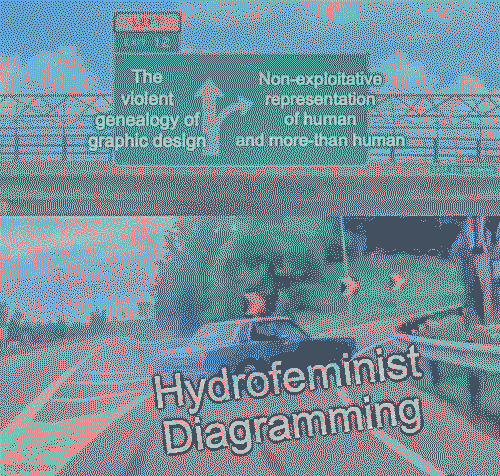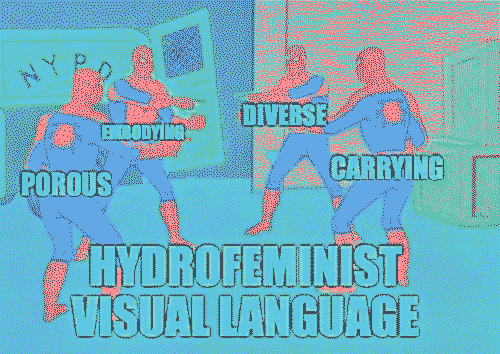Hydrofeminism also encourages us to think “with” rather than “about” water, seeing nature as becoming rather than being. In the words of Cecilia Chen:
“Waters take place. The movements of water in our daily lives link us to places and to each other environmental toxicity as well as the many everyday watery places that we make together. Thinking with watery places asks us to recognize places as always permeable and permeated with water – as shaped by water quality, scarcity, or abundance. [...] Further, it requires that we consider a lively relationality and an ethics of environmental community. Water is more than a resource, we should think with it for a more holistic understanding of our world.”*
The implementation of hydrofeminist ideas in the practice of graphical diagramming is an attempt to deviate from the history of the discipline being an instrument of colonial, racial, and surveillance capitalism, perpetuating reduction, segregation, extraction, and commodification of marginalized human and more-than-human bodies.
The visual language(s) for hydrofeminist economic diagrams that we looked for as a response are diverse, porous, emancipating and collective.


* Chen, Cecilia. "Watery Place." In Thinking with Water, edited by Cecilia Chen, Janine MacLeod, and Astrida Neimanis, 275. Montreal; Kingston: McGill-Queen's University Press, 2013.